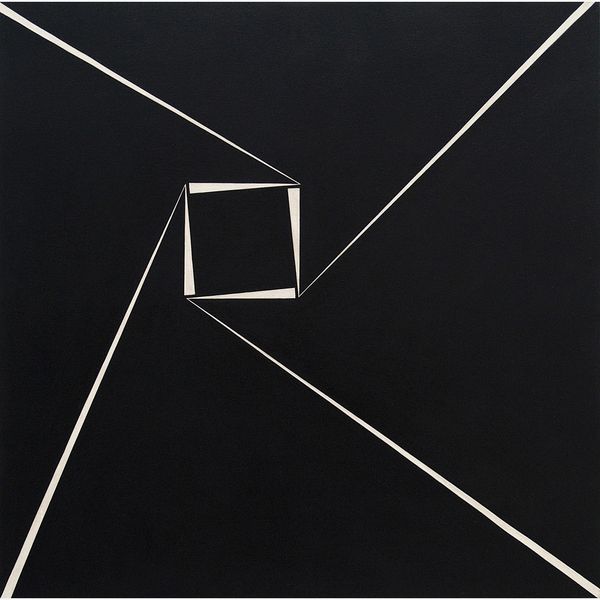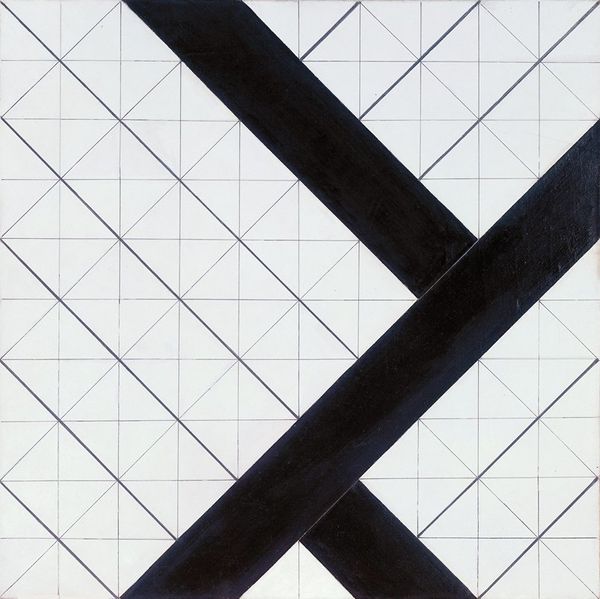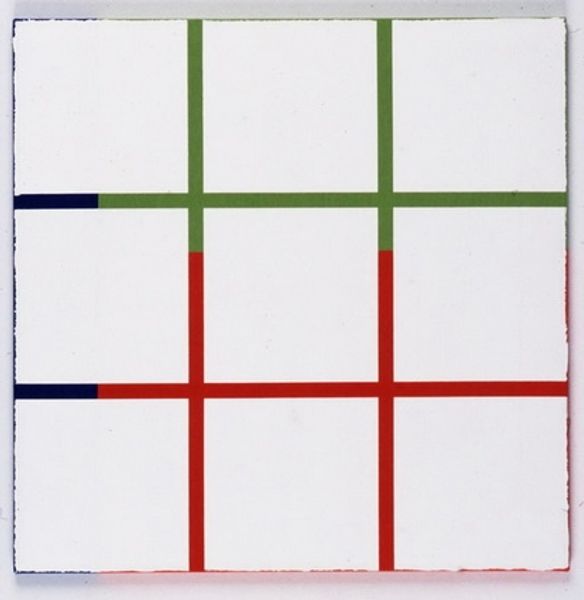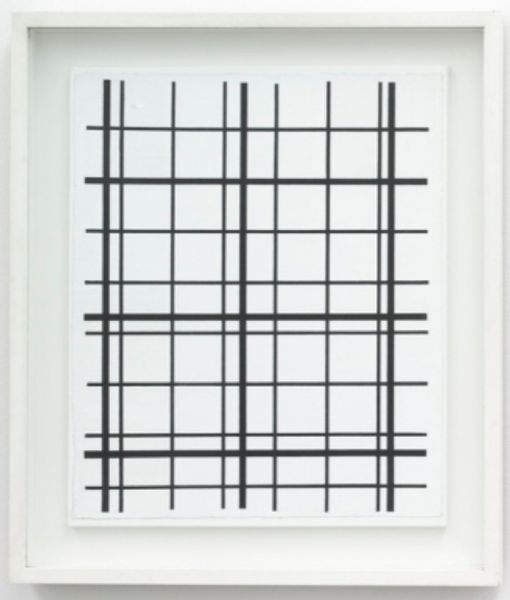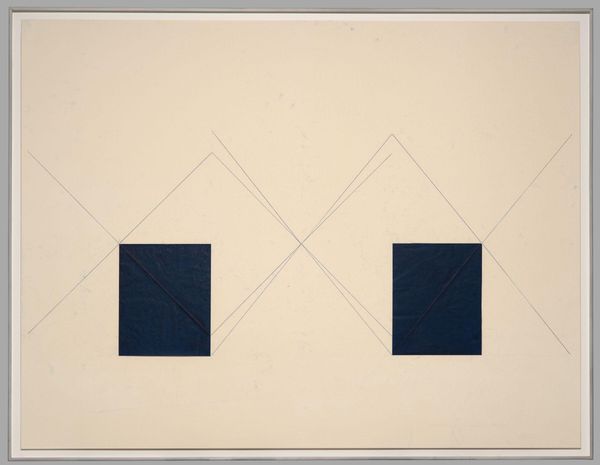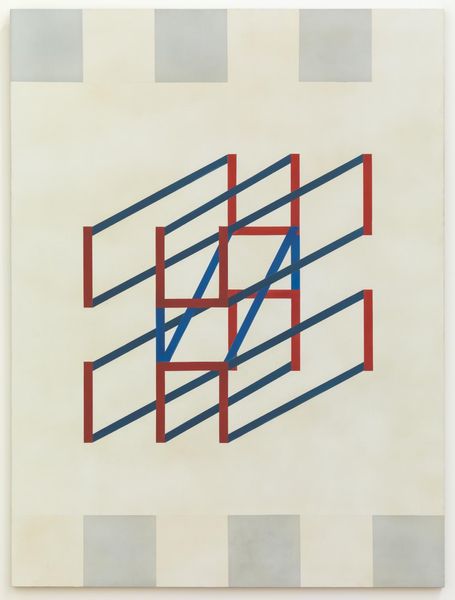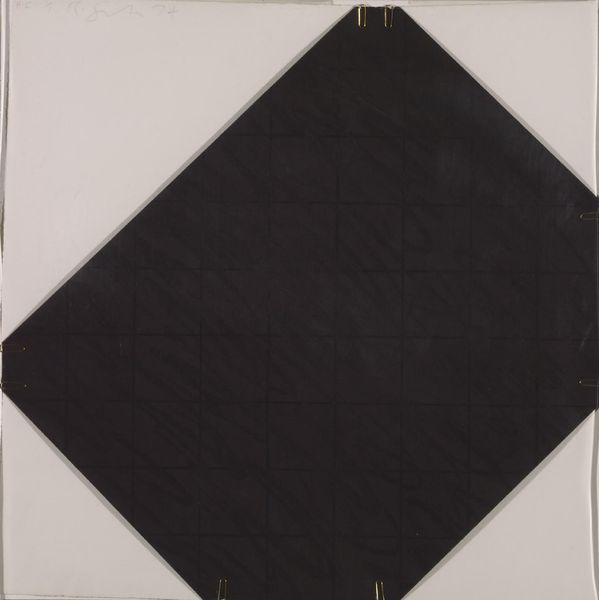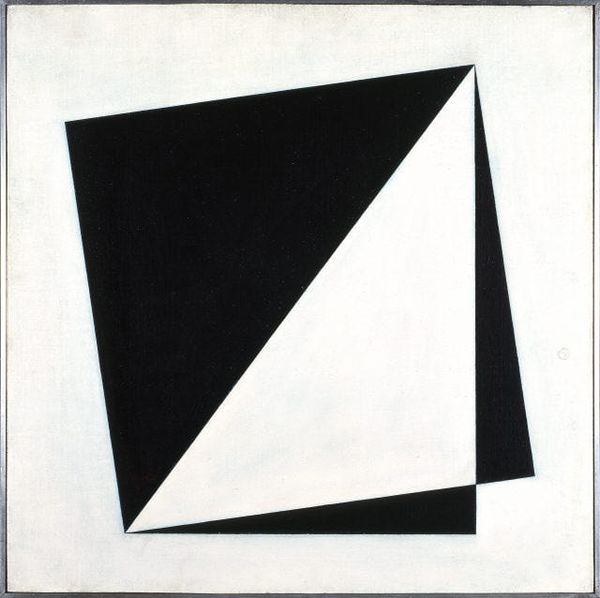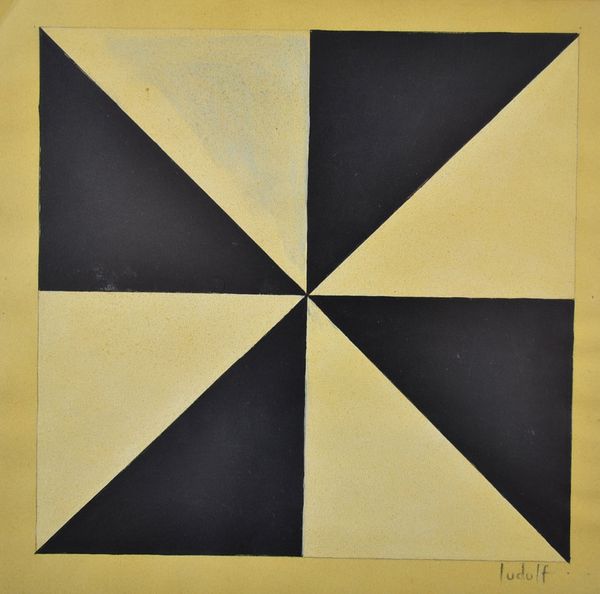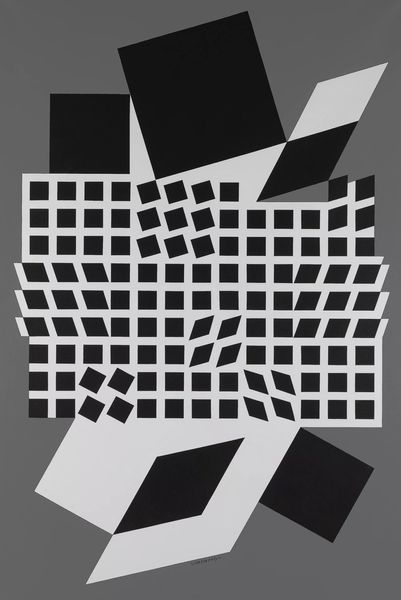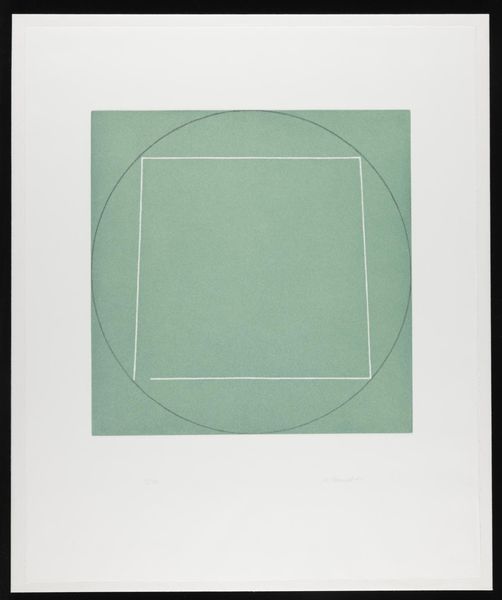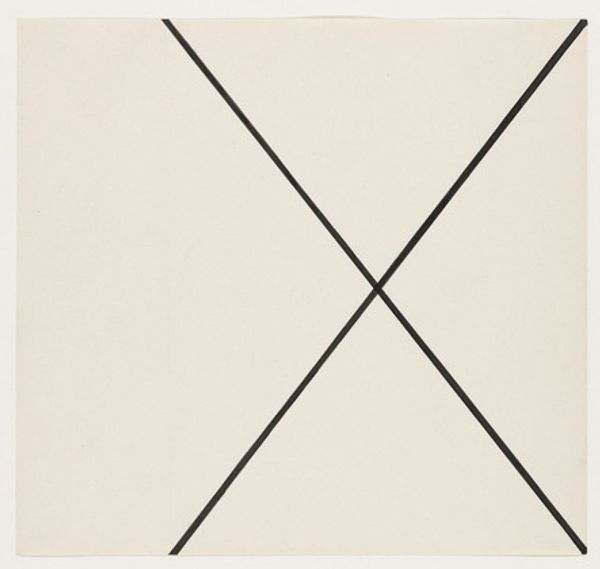
Dimensions: support: 500 x 500 mm frame: 690 x 691 x 80 mm
Copyright: CC-BY-NC-ND 4.0 DEED, Photo: Tate
Editor: Theo van Doesburg's "Counter-Composition VI" is a geometric, grid-based work. The stark black lines on a white background give it a very austere feel. What do you see in this piece? Curator: I see a radical deconstruction of traditional composition, a rejection of the established order through pure abstraction. It reflects the utopian ideals of the De Stijl movement and their desire to create a new visual language, divorced from the past. Editor: So, the artist is using abstraction as a form of social commentary? Curator: Precisely! The stark geometry can be seen as a response to the chaos and upheaval of the early 20th century. Van Doesburg sought to create a universal visual language, accessible to all, free from cultural baggage, through which to rebuild society. Editor: I never considered the political implications of abstraction. Curator: Art is never created in a vacuum. Reflect on how the formal elements of art are intertwined with social and political movements. Editor: That's a powerful perspective; I'll keep that in mind!
Comments
tate 8 months ago
⋮
http://www.tate.org.uk/art/artworks/doesburg-counter-composition-vi-t03374
Join the conversation
Join millions of artists and users on Artera today and experience the ultimate creative platform.
tate 8 months ago
⋮
Van Doesburg used a diagonal grid in this painting to create a dynamic tension with the format of the canvas. For him, diagonal lines signalled a spiritual liberation from ‘earth-bound’ verticals and horizontals. He edited an art, architecture and design magazine, De Stijl. It reflected his own wide-ranging activities. He also applied the ‘Counter-Composition’ approach to interior design. A diagonal colour-scheme contrasted with the upright architectural structure. Gallery label, January 2019

